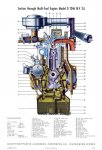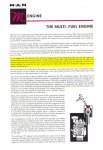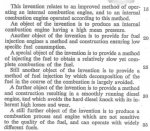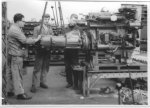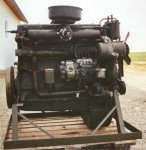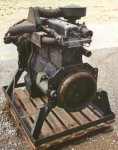Rolling_Eudaimonia
New member
- 571
- 2
- 0
- Location
- New York State
So I have to say I was wrong about the engine in many respects:
1) the depression in the piston is not due to compression ratio.
2) the actual combustion chamber is in the piston.
It is a curious design since the combustion chamber is actually part of the piston itself, that is very unusual. But it does allow them to do two things: one have a hemispherical combustion combustion with direct injection; and, two maintain the overhead valves without adopting some form of overhead camshaft arrangement. However, I don't see how this feature alone is doing anything different than a normal hemispherical chamber would if you had installed two camshafts one for intake and one for exhaust with the injector direction in the center of the combustion chamber. The effect would be exactly the same. You would get the maximum amount of air-flow mixture for the volume of the cylinder . Also you get the optimum position for the valves as well. And the write up seems to indicate the design was common to M.A.N engines of the era that they all had some form of chamber in the piston for combustion, the only difference was that M engines had it directly in the center line of the piston to create a true hemispherical combustion chamber with optimized direct injection. They are unclear in these documents exactly to the theory behind the hemispherical combustion chamber and its effects on the usage of other fuels, they allude to multi-fuel aspects being solved somewhere else. I'm not sure but I have more stuff coming by mail...
Hopefully that will shed more light on the theory behind the engine's operation.
1) the depression in the piston is not due to compression ratio.
2) the actual combustion chamber is in the piston.
It is a curious design since the combustion chamber is actually part of the piston itself, that is very unusual. But it does allow them to do two things: one have a hemispherical combustion combustion with direct injection; and, two maintain the overhead valves without adopting some form of overhead camshaft arrangement. However, I don't see how this feature alone is doing anything different than a normal hemispherical chamber would if you had installed two camshafts one for intake and one for exhaust with the injector direction in the center of the combustion chamber. The effect would be exactly the same. You would get the maximum amount of air-flow mixture for the volume of the cylinder . Also you get the optimum position for the valves as well. And the write up seems to indicate the design was common to M.A.N engines of the era that they all had some form of chamber in the piston for combustion, the only difference was that M engines had it directly in the center line of the piston to create a true hemispherical combustion chamber with optimized direct injection. They are unclear in these documents exactly to the theory behind the hemispherical combustion chamber and its effects on the usage of other fuels, they allude to multi-fuel aspects being solved somewhere else. I'm not sure but I have more stuff coming by mail...
Hopefully that will shed more light on the theory behind the engine's operation.
Attachments
-
73.7 KB Views: 281
-
92.8 KB Views: 269


